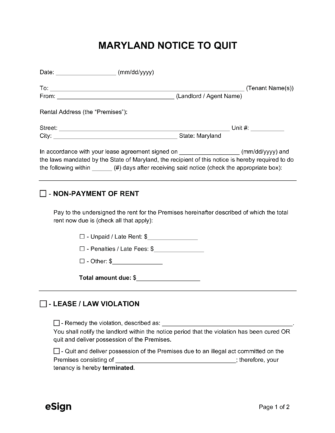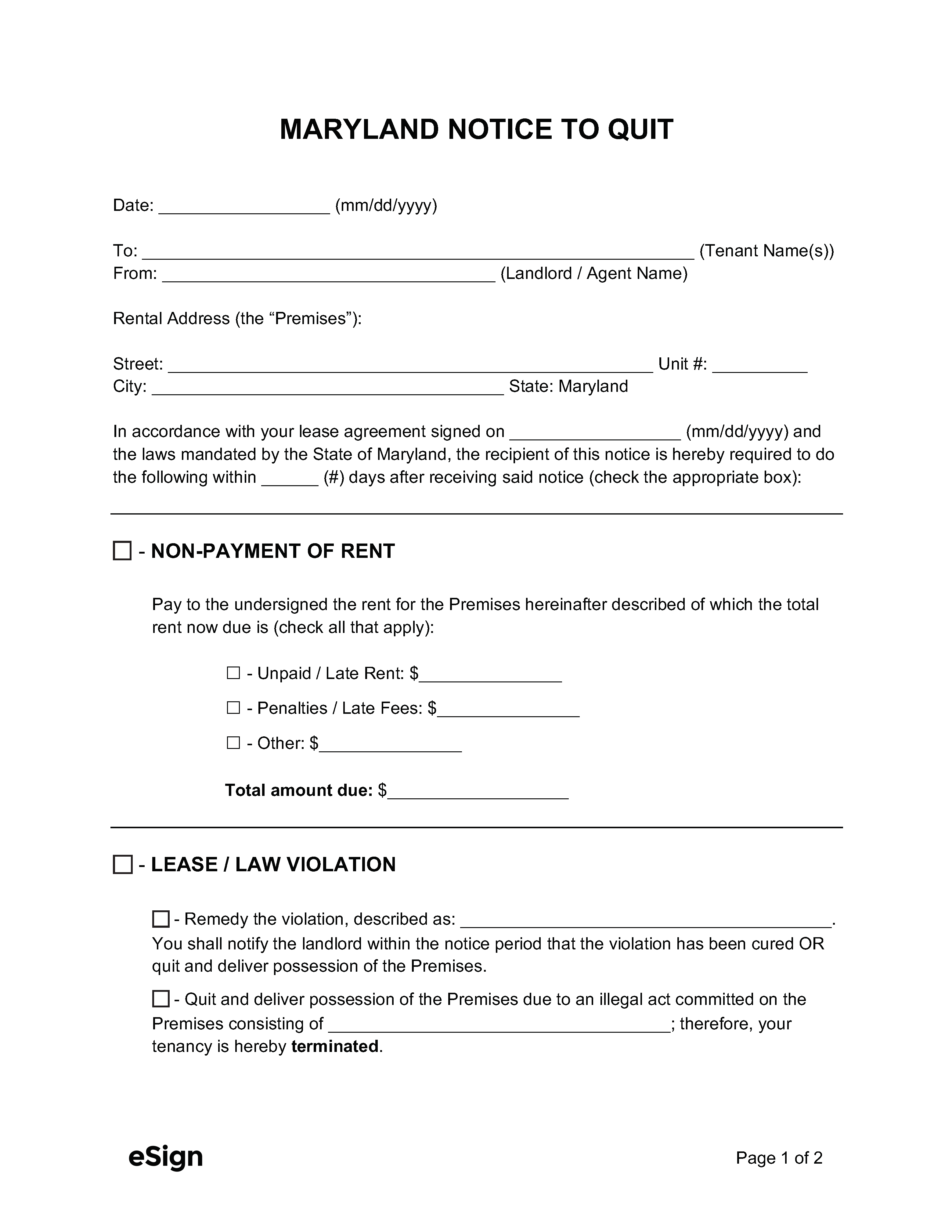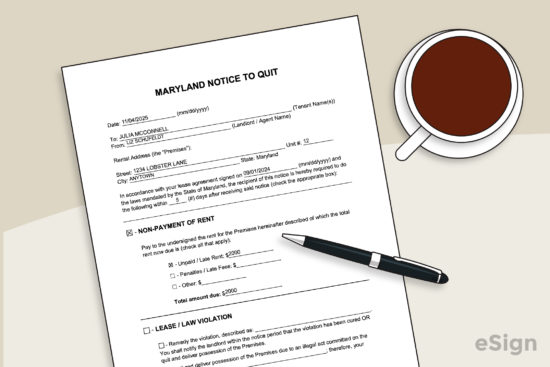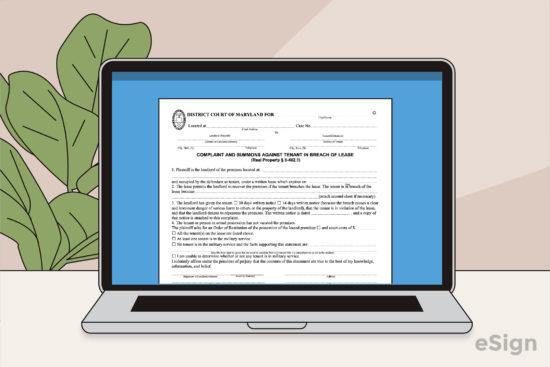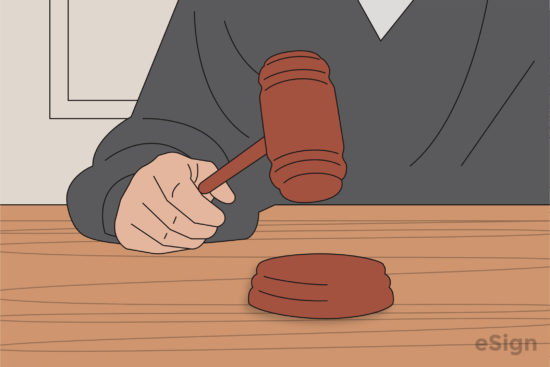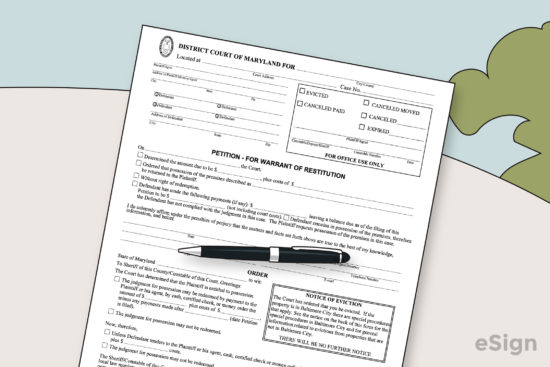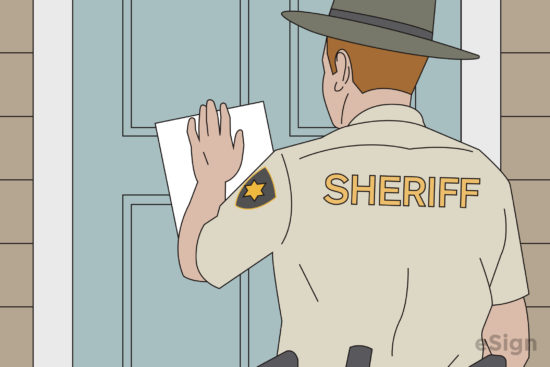Eviction Notices: By Type (4)
10-Day Notice to Quit | Non-Payment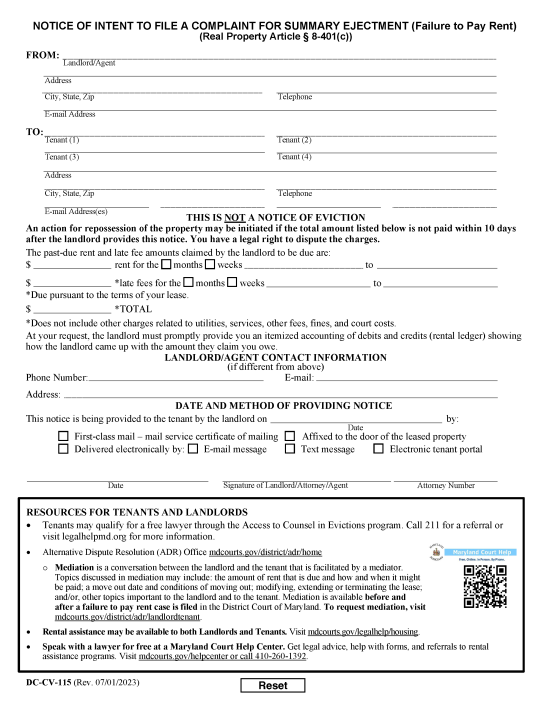 – Gives the tenant ten days’ notice to pay rent or vacate the premises. – Gives the tenant ten days’ notice to pay rent or vacate the premises.
Download: PDF |
30-Day Notice to Quit | Non-Compliance – Served on a tenant who has violated their lease. The tenant will have 30 days to satisfy the landlord’s terms. – Served on a tenant who has violated their lease. The tenant will have 30 days to satisfy the landlord’s terms.
Download: PDF, Word (.docx), OpenDocument
|
 14-Day Notice to Quit | Clear and Imminent Danger – Used when a tenant causes or allows a threat on the premises. 14-Day Notice to Quit | Clear and Imminent Danger – Used when a tenant causes or allows a threat on the premises.
Download: PDF, Word (.docx), OpenDocument
|
 30/60-Day Notice to Terminate Month-to-Month Lease – Terminates a monthly lease with the notice period required by state statutes (30 days for tenants, 60 days for landlords). 30/60-Day Notice to Terminate Month-to-Month Lease – Terminates a monthly lease with the notice period required by state statutes (30 days for tenants, 60 days for landlords).
Download: PDF, Word (.docx), OpenDocument |
Notice Requirements
How to Evict a Tenant in Maryland
Step 1 – Prepare an Eviction Notice
The landlord must prepare a notice and deliver it to the tenant before they can file for eviction.
Step 2 – File Eviction Complaint
If the tenant doesn’t satisfy the notice terms, the landlord may initiate an eviction lawsuit by filing a complaint with the district court. For non-payment cases, the Maryland Courts e-filing service can be used.
Eviction Complaints (some jurisdictions may require additional paperwork upon filing):
- Complaint for Non-Payment (Sample) – Must be e-filed or obtained at the district court.
- Complaint for Breach of Lease – Applicable for both general and substantial lease violations.
- Complaint for Holding Over – Used when a tenant remains on the premises after their lease expires.
- Complaint for Wrongful Detainer – For unlawful occupants who refuse to leave.
The court will schedule an eviction hearing immediately after filing or shortly thereafter. In the second circumstance, the landlord will be mailed notice of the hearing.
Step 3 – Serve Summons on Tenant
The Complaint includes a Summons that the court will mail to the tenant and have posted on their front door. The Summons notifies the tenant of the hearing date and provides instructions about how to defend their case.
Step 4 – Eviction Hearing
The landlord and tenant must appear in court on the hearing date to present their cases. If either party fails to attend the trial, the court may immediately issue a judgment in favor of the present party.
Step 5 – Warrant of Restitution
If the landlord prevails, they must file a Petition for Warrant of Restitution (Sample) with the court. This document petitions the court for a warrant that authorizes law enforcement to evict the tenant from the property.
Non-Payment Evictions
- If the eviction is for the non-payment of rent, the landlord must wait until the fifth business day following the hearing to submit a Petition for Warrant of Restitution.
- The tenant may avoid eviction by paying the total amount due to the landlord before the move-out date unless they have three rent judgments made against them in the past 12 months.
Step 6- Evict Tenant
If the Warrant of Restitution is granted to the landlord and the tenant hasn’t appealed the court’s decisions, the landlord can contact the sheriff’s department to schedule an eviction date to remove the tenant from the property.
Court Forms + Resources
Forms
- Complaint and Summons Against Tenant in Breach of Lease (DC-CV-085)
- Signed By: Landlord, Judge or Clerk, and Sheriff or Constable
- Complaint and Summons Against Tenant Holding Over (DC-CV-080)
- Signed By: Landlord, Judge or Clerk, and Sheriff or Constable
- Complaint for Wrongful Detainer (DC-CV-089)
- Signed By: Landlord, Clerk, and Sheriff or Constable
- Failure to Pay Rent – Landlord’s Complaint for Repossession of Rented Property (DC-CV-082) – Sample
- Signed By: Landlord, Judge or Clerk, and Sheriff or Constable
- Petition for Warrant of Restitution (DC-CV-081) – Sample
- Signed By: Landlord and Judge
Resources
